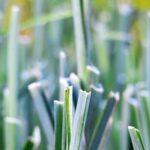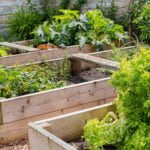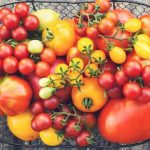When it comes to vegetable gardening, mulch plays a crucial role in maintaining a healthy and productive garden. By protecting the soil and providing various benefits, using the best mulch can significantly impact your vegetable garden’s success. From retaining moisture, regulating temperature, to suppressing weeds, mulch is a gardener’s secret weapon.
Mulching is essential in preserving soil moisture by acting as a protective barrier. The best mulch helps prevent water evaporation from the soil surface, reducing the need for frequent watering. Additionally, it regulates soil temperature by keeping it cooler during hot summer months and warmer in colder seasons. This stability creates an optimal environment for vegetable growth.
Weeds are not just unsightly but also compete with your vegetables for resources like water and nutrients. A layer of mulch acts as a natural weed suppressor by blocking sunlight from reaching weed seeds, preventing their germination and growth. This provides less competition for your precious vegetables, leading to improved yields.
The benefits of using the best mulch go beyond moisture retention and weed suppression. It helps create healthier plants by keeping their roots insulated from extreme temperatures while also reducing diseases caused by splashing soil onto leaves or fruits. Choosing the right type of mulch tailored to your specific needs ensures that you enjoy all these advantages while enhancing overall plant health and productivity in your vegetable garden.
Understanding Different Types of Mulch for Vegetable Gardens
Mulch serves as a valuable tool in maintaining the health and productivity of vegetable gardens. By covering the soil surface, mulch helps to retain moisture, regulate soil temperature, and suppress weed growth. Understanding the different types of mulch available for vegetable gardens is essential for gardeners to make an informed decision that suits their specific needs and preferences.
Organic Mulch Options
One type of mulch commonly used in vegetable gardens is organic mulch. Organic mulches are derived from natural materials such as straw, hay, or grass clippings. These materials have several advantages when used as mulch in vegetable gardens.
First, they have high water-holding capacity, helping to maintain adequate soil moisture levels for plants. Second, organic mulches gradually break down over time, adding beneficial organic matter to the soil which improves its structure and fertility. Lastly, organic mulches provide a physical barrier that suppresses weed growth and competition.
However, it’s important to note that different types of organic mulches may be more suitable for certain vegetable crops or growing conditions than others. For example, straw is often recommended for tomatoes due to its ability to retain warmth during cooler periods.
On the other hand, grass clippings can provide excellent weed suppression but may require additional nitrogen fertilization due to their high carbon-to-nitrogen ratio. Gardeners should consider factors such as soil type, climate, and specific vegetable crops when choosing the best organic mulch for their gardens.
Inorganic Mulch Options
In addition to organic mulches, there are also inorganic options available for vegetable gardens such as black plastic or landscape fabric. Inorganic mulches have unique benefits that can enhance plant growth and yield in specific situations.
For example, black plastic is known for its ability to absorb heat from sunlight and warm up the soil early in the growing season-a significant advantage for heat-loving vegetables like peppers or melons. Landscape fabric, on the other hand, provides excellent weed suppression while allowing water and nutrients to pass through to the soil.
However, there are a few considerations to keep in mind when using inorganic mulches. One concern is proper water drainage, as these materials may hinder water movement if not installed correctly.
Additionally, some gardeners may find that inorganic mulches do not provide the aesthetic appeal or naturalistic look that organic mulches can bring to a garden. Overall, understanding the benefits and limitations of inorganic mulch options can help gardeners make an informed decision about whether they are suitable for their specific vegetable garden needs.
Choosing the Right Mulch
When choosing the best mulch for a vegetable garden, it’s crucial to consider factors such as cost, availability, sustainability, and personal preferences. Some gardeners prioritize using organic materials for their environmental benefits and ability to improve soil quality over time. Others may choose inorganic mulches for specific advantages such as temperature regulation or weed control.
Ultimately, finding the best mulch for a vegetable garden involves experimentation and learning from experience. Gardeners should start by considering their specific needs and goals for their garden and then try different types of mulch to see which works best for them.
It’s also helpful to seek advice from local gardening experts or fellow gardeners who have experience with mulching vegetable gardens. With careful consideration and experimentation, finding the best type of mulch can greatly contribute to the health and productivity of a vegetable garden.
Choosing the Best Organic Mulch for Vegetable Gardens
When it comes to choosing the best mulch for your vegetable garden, organic options are often a popular choice. Organic mulch offers numerous benefits such as improved soil health, reduced weed growth, and enhanced moisture retention. However, with a variety of organic mulch options available, it’s important to select the most suitable one based on your specific needs and preferences.
- Compost: Compost is an excellent choice for vegetable gardens as it not only adds valuable nutrients to the soil but also improves its structure. It helps retain moisture in the soil while suppressing weeds. Compost can be made at home using kitchen scraps and yard waste or purchased from a local supplier. Before applying compost as mulch, make sure it is well-aged and free from weed seeds.
- Wood Chips: Wood chips provide long-lasting mulching benefits and are particularly beneficial for vegetables that prefer slightly acidic soil conditions, such as tomatoes and peppers. They help conserve moisture, suppress weeds, and regulate soil temperature. However, avoid using freshly chipped wood as it may rob nitrogen from the soil during decomposition. Instead, opt for aged wood chips or shredded bark.
- Leaves: Leaves are another readily available organic mulch option that can be obtained easily during fall clean-up. Shredded leaves work best as they break down more quickly than whole leaves while still providing great weed suppression and moisture retention benefits. Leaf mulch is ideal for vegetables with shallow root systems like lettuce or spinach.
Remember that when selecting an organic mulch for your vegetable garden, consider factors such as your specific climate, type of soil in your garden, and the requirements of your vegetable crops.
Here are some tips to keep in mind when using organic mulch:
- Apply a layer of mulch around 2-4 inches thick around plants to suppress weeds and maintain moisture levels.
- Keep the mulch a few inches away from the base of the plant to prevent moisture-related issues and pests.
- Regularly monitor moisture levels in the soil to ensure that it’s not overly saturated or dried out, making adjustments to the mulch thickness as needed.
By choosing the best organic mulch for your vegetable garden and following these tips, you can maximize the health and productivity of your plants.
Exploring the Benefits of Inorganic Mulch for Vegetable Gardens
Inorganic mulch options like black plastic or landscape fabric offer several benefits for vegetable gardens. These types of mulch provide excellent weed control by blocking sunlight and preventing weed growth. Weeds compete with vegetable plants for nutrients, water, and space, so effective weed suppression is crucial for the health and productivity of the garden.
Additionally, inorganic mulch helps retain moisture in the soil by reducing evaporation. This is especially important during hot summer months when water can quickly evaporate from the soil surface. By conserving moisture, inorganic mulch ensures that vegetable plants have a steady supply of water, reducing the need for frequent irrigation.
Another advantage of using inorganic mulch is its ability to absorb and radiate heat. Black plastic, in particular, can help warm up the soil earlier in the growing season, which promotes faster plant growth. It also retains heat during cooler periods, extending the growing season for certain vegetables.
| Benefits of Inorganic Mulch |
|---|
| Effective weed control |
| Improved moisture retention |
| Heat absorption for early and extended growing seasons |
While inorganic mulch offers these advantages, there are some considerations to keep in mind when using them. Unlike organic mulches that gradually break down and enrich the soil over time, inorganic mulches do not contribute to soil fertility. Therefore, it is essential to regularly monitor and maintain soil nutrient levels through proper fertilization practices when using these types of mulches.
Additionally, it is important to ensure proper irrigation when using inorganic mulches as they may hinder water penetration into the soil if not installed correctly. Proper watering techniques such as using drip irrigation or making small holes in the mulch to allow water access to the soil can mitigate this issue.
By understanding the benefits and considerations of using inorganic mulch, vegetable gardeners can make informed decisions about whether this type of mulch is suitable for their specific gardening needs.
Step-by-Step Guide
Applying mulch effectively is crucial for maximizing the benefits it provides to vegetable gardens. Follow this step-by-step guide to ensure you are using mulch in the most effective way:
- Prepare the garden bed: Before applying mulch, make sure your garden bed is clean and free of weeds. Pull out any existing weeds or grass and level the soil surface.
- Choose the right type of mulch: Consider your specific needs and preferences when selecting a type of mulch. Organic options such as compost, wood chips, or leaves provide additional nutrients to the soil as they break down. Inorganic options like black plastic or landscape fabric offer better weed control and moisture retention.
- Apply mulch with proper thickness: Apply a layer of mulch that is approximately 2-4 inches thick evenly throughout the garden bed. Avoid piling up mulch next to plant stems, as this can cause moisture buildup and create a breeding ground for pests and diseases.
- Leave space around stems: When applying mulch, leave a small gap (about 1 inch) around the base of plant stems to allow air circulation and prevent rotting.
- Mulch maintenance: Regularly check your mulched vegetable garden to ensure that the mulch layer remains intact and at an adequate thickness. If you notice any areas where the mulch has thinned or worn away, replenish it as needed.
- Watering considerations: When watering your vegetable garden, adjust your irrigation methods to accommodate for the presence of mulch. Mulched gardens retain moisture more efficiently, so you may need to adjust your watering schedule accordingly.
- Mulching frequency: Depending on the type of material used as mulch and weather conditions, you may need to refresh or replace your mulch periodically. Organic materials will decompose over time, so adding a fresh layer every year can help maintain its benefits.
By following these steps, you can ensure that you are applying mulch effectively in your vegetable garden. Remember to consider the specific needs of your plants and adjust your mulching practices accordingly to optimize plant health and productivity. With proper application, mulch can provide numerous benefits for your vegetable garden, including improved soil moisture, temperature regulation, weed suppression, and overall enhanced plant growth.
Best Practices for Mulching Different Types of Vegetable Crops
Vegetable gardens consist of a wide variety of crops, each with their specific needs and requirements. When it comes to mulching different types of vegetable crops, there are some best practices to keep in mind to ensure optimal growth and yield. This section will explore these best practices and provide guidance on how to effectively mulch popular vegetables such as tomatoes, peppers, cucumbers, and lettuce.
Tomatoes are one of the most common vegetables grown in home gardens, and they greatly benefit from mulching. The best mulch for tomatoes is organic matter such as straw or wood chips. Applying a layer of mulch around tomato plants helps retain soil moisture, regulate soil temperature, and suppress weed growth.
It also prevents soil splash-up onto the leaves, reducing the risk of disease transmission. However, it is important not to place the mulch too close to the stems to avoid excess moisture buildup.
Peppers also thrive with the right mulching techniques. Organic mulches like straw or compost work well for peppers as they provide excellent moisture retention properties while allowing proper airflow around the plants’ base. For larger peppers that may need trellising support, using biodegradable plastic mulch can be beneficial in suppressing weeds and conserving soil moisture. Just remember to cut an opening in the plastic for each pepper plant.
Cucumbers are typically vining plants that can sprawl across the garden bed. Mulching cucumbers helps regulate soil temperature and maintain consistent moisture levels for optimum fruit development. Straw or grass clippings make good choices for cucumber mulch as they allow air circulation while preventing weed competition. Ensure that you create a generous mound around each cucumber plant’s base to retain moisture effectively.
Lettuce is a cool-season crop that thrives in consistently moist soil conditions. Mulching lettuce beds is crucial for retaining soil moisture and keeping temperatures cooler during warm periods since excessive heat can cause lettuce leaves to become bitter.
Organic mulches like compost or shredded leaves work well for lettuce as they provide the necessary moisture without overheating the soil. When mulching lettuce, be sure to keep the mulch a few inches away from the base of each plant to prevent rotting stems.
In summary, mulching different types of vegetable crops requires considering their specific needs and growth characteristics. Understanding the best practices for mulching popular vegetables such as tomatoes, peppers, cucumbers, and lettuce can greatly contribute to their overall health and productivity. By choosing the right type of mulch and applying it correctly, gardeners can create an ideal environment for their vegetable crops and enjoy bountiful harvests.
| Vegetable Crop | Recommended Mulch |
|---|---|
| Tomatoes | Organic matter such as straw or wood chips |
| Peppers | Organic matter like straw or compost; biodegradable plastic mulch for larger varieties |
| Cucumbers | Straw or grass clippings |
| Lettuce | Organic matter like compost or shredded leaves |
Troubleshooting Common Issues with Mulch in Vegetable Gardens
One of the potential issues that may arise when using mulch in vegetable gardens is the development of fungal diseases. While mulch can help retain moisture and suppress weeds, it can also create a moist environment that favors the growth of fungi. To prevent fungal diseases, it is important to choose the right type of mulch and apply it correctly.
Avoid using mulches that can harbor fungal spores, such as fresh grass clippings or diseased plant material. Instead, opt for clean organic mulches like straw or compost.
Another common issue with mulch in vegetable gardens is excessive moisture retention. While it is important for soil to remain adequately moist, too much moisture can lead to root rot and other problems. To prevent excessive moisture retention, ensure that your mulch layer is not too thick. A layer of 2-3 inches should be sufficient to provide the desired benefits without trapping excess moisture.
Nutrient imbalances can also occur when using certain types of mulch in vegetable gardens. Some organic mulches like wood chips or sawdust can temporarily tie up nitrogen in the soil as they decompose, which may result in nutrient deficiencies for plants.
To address this issue, consider adding nitrogen-rich amendments, such as compost or blood meal, when applying these types of mulches. Regularly monitoring nutrient levels and adjusting fertilization practices accordingly can also help maintain proper nutrient balance in your vegetable garden.
By understanding and addressing these common issues with mulch in vegetable gardens, you can ensure that your plants thrive and avoid potential setbacks. By selecting the right type of mulch, managing moisture levels effectively, and monitoring nutrient balance, you can utilize this valuable gardening technique to its full potential and enjoy a bountiful harvest from your vegetable garden.
Expert Tips and Tricks for Maintaining and Refreshing Mulch in Vegetable Gardens
Regular Inspection and Maintenance
To ensure that your mulch continues to provide optimal benefits for your vegetable garden, it is important to regularly inspect and maintain it. Regularly inspect the mulch for any signs of weeds, pests, or disease. Remove any weeds that may have sprouted through the mulch and check for any insect activity. If you notice any signs of disease, such as mold or mildew, remove the affected area immediately to prevent further spread.
In addition to inspecting for issues, it is also important to periodically fluff or turn the mulch. This helps prevent compaction and allows for better air circulation within the soil. Simply use a rake or garden fork to gently loosen the top layer of mulch.
Watering Considerations
When watering your vegetable garden, it is important to consider how the water interacts with the mulch. Organic mulches like wood chips or straw can absorb water and help retain moisture in the soil. However, they can also create a barrier that prevents water from reaching the soil beneath. To avoid this issue, be sure to water deeply and evenly so that water penetrates through the mulch and reaches the plant roots.
Additionally, during periods of heavy rainfall or excessive watering, organic mulches can become saturated and lead to waterlogged soil conditions. To prevent this from happening, monitor moisture levels regularly and adjust watering accordingly. If you notice that your mulch is retaining too much moisture, consider reducing irrigation frequency or using a thinner layer of mulch.
Refreshing Mulch
Over time, organic mulches will break down and decompose. As a result, they may need to be refreshed annually or as needed. The frequency at which you refresh your mulch depends on several factors including climate conditions and type of organic material used as mulch.
Before refreshing your mulch layer, make sure to remove any debris, weeds, or pests that may have accumulated. Then, apply a fresh layer of mulch on top of the existing one. Aim for a thickness of about 2-3 inches, making sure not to bury the stems or base of your vegetable plants.
Conclusion
In conclusion, the choice of mulch can make a significant difference in the overall health and productivity of your vegetable garden. Throughout this article, we have explored the importance of mulch for maintaining moisture, temperature, and weed suppression in the soil. We discussed various types of mulch, both organic and inorganic, outlining their pros and cons to help you make an informed decision.
When selecting the best mulch for your vegetable garden, it is essential to consider factors such as soil type, climate, and specific crops. Organic mulch options like compost, wood chips, and leaves provide numerous benefits such as nutrient enrichment and improved soil structure. On the other hand, inorganic mulches like black plastic or landscape fabric offer advantages in terms of weed control, moisture retention, and heat absorption.
To effectively apply mulch in your vegetable garden, it is crucial to follow proper techniques like preparing the garden bed adequately and maintaining the correct thickness of mulch. Additionally, different types of vegetables may require specific considerations when it comes to mulching. For example, tomatoes may benefit from straw or hay mulch to deter fungal diseases, while peppers may require additional heat absorption provided by black plastic.
While using mulch can greatly enhance your gardening success by improving plant health and increasing yields, it is important to be aware of potential issues that may arise. Fungal diseases can be a common problem with excessive moisture retention from certain types of organic mulch. By understanding these challenges and implementing preventive measures like proper spacing between plants or improving drainage systems; you can ensure a healthy growing environment for your vegetables.
Frequently Asked Questions
What type of mulch is best for vegetable garden?
When it comes to choosing the best mulch for a vegetable garden, there are several options to consider. Organic mulches such as straw, grass clippings, or shredded leaves are typically recommended for vegetable gardens. These types of mulches not only help retain soil moisture and suppress weed growth but also break down over time, adding valuable organic matter to the soil.
Mulches made from wood chips or bark can also be used, but they tend to decompose at a slower rate than organic mulches. Ultimately, the choice of mulch will depend on personal preference, availability, and specific needs of the vegetable garden.
What is the best mulch for tomatoes and peppers?
Tomatoes and peppers have specific requirements when it comes to mulching. To promote optimal growth and development in these plants, it is important to choose a mulch that can provide adequate moisture retention and heat regulation. One common choice for mulching tomatoes and peppers is black plastic mulch.
This type of mulch has been shown to increase soil temperature, reduce weed competition, conserve water by minimizing evaporation, and even speed up ripening in tomatoes. Additionally, straw or grass clippings can also work well as mulches for tomatoes and peppers as they help retain moisture while allowing air circulation around the plants.
What is the healthiest mulch for gardens?
The healthiest type of mulch for gardens ultimately depends on various factors such as the specific needs of the plants being grown and environmental considerations. However, organic mulches are generally considered among the healthiest options for gardens due to their numerous benefits. Organic mulches help improve soil structure by increasing its fertility and promoting beneficial microbial activity.
They also reduce erosion risks by preventing water runoff and contribute essential nutrients as they break down over time. Overall, using organic materials like compost, shredded leaves or straw can enhance the health and vitality of a garden by creating a favorable growing environment for plants while minimizing negative impacts on the ecosystem.

If you’re looking to get into vegetable gardening, or are just looking for some tips on how to make your current garden better, then you’ve come to the right place! My name is Ethel and I have been gardening for years. In this blog, I’m going to share with you some of my best tips on how to create a successful vegetable garden.





